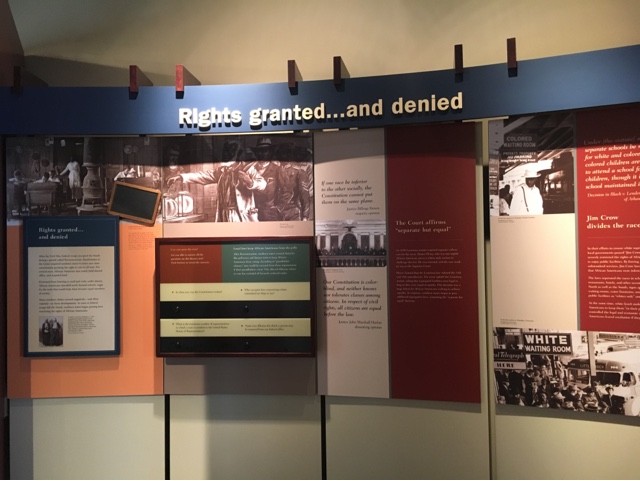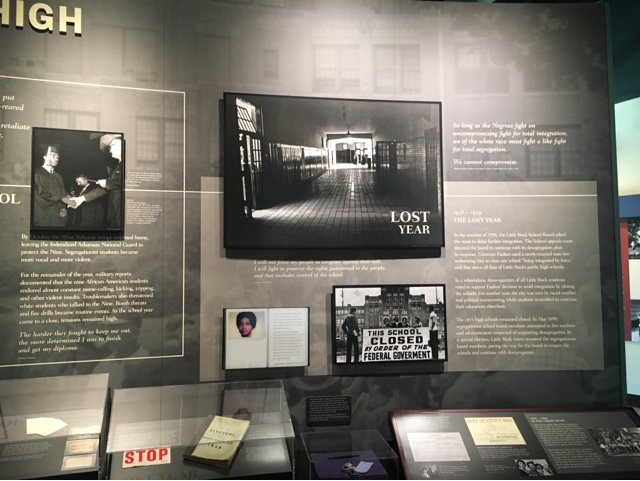Central High School in Little Rock, Arkansas, was the location of a crisis that drew the attention of the entire nation in 1957.
After the Brown v Board of Education of Topeka decision came from the Supreme Court in 1954, school districts were required to integrate. It took time to plan and implement this change. In Little Rock, as in other communities throughout the nation, though 3 years had passed, the white community was not ready for the change. So "not ready" that I LOVE LUCY was interrupted 11 times to show the drama that was taking place.
We started at the visitor center but quickly headed over to the high school. On the way, we stopped at a 50s era gas station, complete with pumps set to 22 1/2 cents per gallon.This gas station is where reporters hung out waiting to cover what would take place on the first day of school.
The school is beautiful. It is five stories high and was (and still is) the premier high school in the area.
In the front lobby, there is a display case honoring the original nine African-American students who attended here. The students would become known as the Little Rock Nine.
Once inside the school, we could not take any pictures because it is still an active school with over 2500 students.
Outside the school, there are several memorials from the 50s on all 4 corners.
The Nine endured a very difficult year. They had to apply to get the spots, they had to prove themselves regarding their grades and behavior, and finally they had to agree to some rules - among them - not to retaliate no matter what the other students may do. I can't imagine what it would be like to live in those times. But my dad did it. He graduated the year before all this from a segregated high school. And his attitude is basically, "You do what you gotta do."
The ranger quoted similar sentiments.
The visitor center was well done.
It presented the history leading up to the events in Little Rock.
Then, there was a good presentation of the events at Little Rock for those who are not able to take the tour.
And then they branch out and show how communities all over the nation were dealing with integration during the same time period.
The visitor center was well done.
It presented the history leading up to the events in Little Rock.
Then, there was a good presentation of the events at Little Rock for those who are not able to take the tour.
And then they branch out and show how communities all over the nation were dealing with integration during the same time period.
As we are back in the south, many of the historical sites we visit deal with racial issues. And I find myself rather uncomfortable and emotional again as I identify with both sides. Honestly, it was nice to deal with Civil War and civil rights issues in batches: once before our Christmas break, again after our Christmas break, and now after an abundance of deserts and Native Americans. (Though I do have a bit of Native American blood, thankfully, I don't identify with their issues as well - only because that would be too much!)
For my children, even though they look white, it was interesting to see their reaction when they were told that because they are a quarter black, during this time period, they would have been treated with prejudice.
















No comments:
Post a Comment